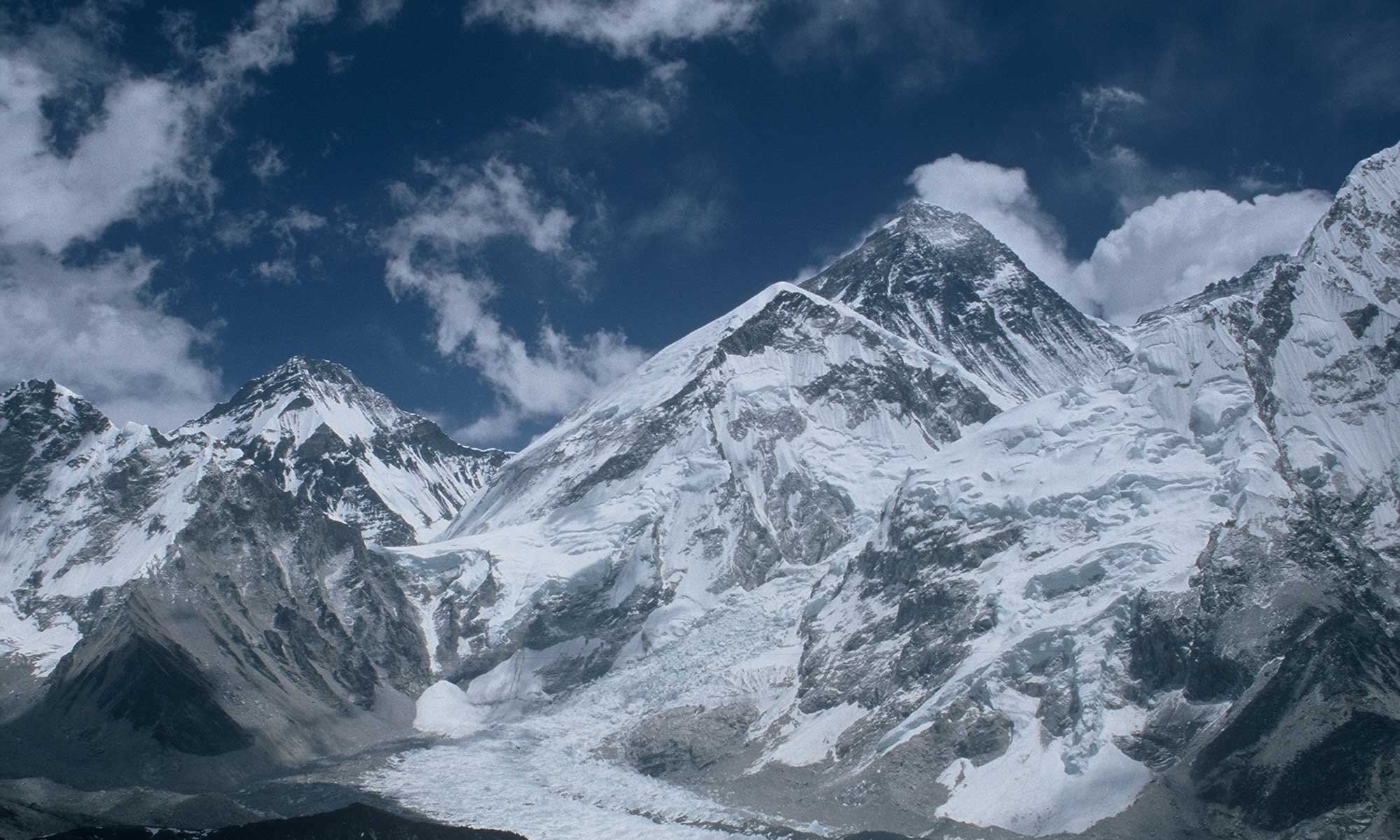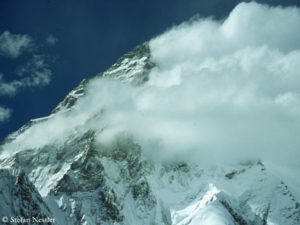“The lower barometric pressure caused by the location, and winter are drawbacks. Nevertheless my guess is it is possible,” John Burnard West answers my question about whether he thinks a winter ascent of K2 without bottled oxygen is realistic. “Ideally the climbers should go on a day when the pressure is high.”
Most recently, after all, there had been a heated discussion in the scene about whether the possible first winter ascent of the second-highest mountain on earth this year would have to be made without bottled oxygen – as was the case with all first winter ascents of eight-thousanders so far, with the exception of Mount Everest. This is primarily a question of mountaineering ethics.
But what about the probability that any climber at all is capable of scaling K2 in winter without breathing mask? Is it even physiologically possible? No one has ever climbed higher in winter on K2 than the Russian Denis Urubko and the Pole Marcin Kaczkan in 2003: they reached an altitude of 7,650 meters on the north side of the mountain – without bottled oxygen.
On the ergometer at 7.440 meters
To clarify the question, I had turned to John B. West. The 93-year-old professor emeritus of the University of California at San Diego is a living legend of high-altitude medicine. Anyone looking for information on physical performance at very high altitude will come across the name John B. West sooner rather than later.
A native of Australia who has been living in San Diego and also holds U.S. citizenship, West participated as a physiologist in the “Silver Hut” expedition in the Khumbu region in Nepal 60 years ago. It was led by Everest first ascender Edmund Hillary and lasted from September 1960 to June 1961. The international team of 21 scientists and climbers spent the winter in a specially constructed silver plywood hut insulated with foam plastic. It was built on the Mingbo glacier at an altitude of 5,800 meters – within sight of the 6,814-meter-high Ama Dablam, the first ascent of which was achieved during the expedition. The attempt to scale Makalu as well failed. But West and Michael Ward tested the oxygen uptake of their bodies at Makalu La at 7,440 meters – with a dismountable bicycle ergometer.
A bottle of champagne on Ang Rita Sherpa
In the fall of 1981, West led a U.S. research expedition to Mount Everest in which five team members reached the summit and one of them – the physician and climber Chris Pizzo – also performed physiological tests at 8,849 meters. One of the results (I recommend West’s Youtube lecture below): even taking into account that there are people whose bodies cope better with hypoxia compared to others, climbing Mount Everest without bottled oxygen is at the physiological limit. At some point, the minimum amount of oxygen necessary for organs and brain to remain functional is just missing. It is not for nothing that altitudes above 8,000 meters are called the death zone, because the body inevitably degenerates and therefore a too long stay up there ends fatally. Others set the limit already at 7,000 meters.
West and Co. determined that the oxygen partial pressure – the pressure at which oxygen is forced into the lungs – on the summit of Everest is only one-third as high as at sea level. The scientists also pointed out that barometric pressure is usually lower in winter. The first winter ascent of Everest without breathing mask by Ang Rita Sherpa on 22 December 1987, was a “remarkable achievement,” John B. West later wrote. “I owe him a bottle of champagne.”
Paying attention to air pressure
Recently, as reported, an international team of scientists led by British climatologist Tom Matthews also drew attention to the great importance of fluctuating air pressure when climbing Everest without bottled oxygen. Thus a mountaineer at the lowest determined air pressure virtually has to climb almost 750 meters higher than someone who is on the way at the highest determined pressure – because of the different amounts of oxygen that are pressed into the lungs and thus also affect performance.
“To protect themselves, mountaineers in winter climbing without supplemental oxygen should keep a close eye on forecasts of air pressure at the summit,” Matthews wrote me. This has not yet become routine, says Tom: “Mountaineers usually decide whether to push for the summit based on the wind speed, but we have shown that the lowest pressure (and therefore lowest oxygen availability) does not generally coincide with the strongest winds.”
Defencelessly exposed to the wind
On K2, climbers are likely to find both low air pressure and strong winds in winter. “Sometimes K2 is higher than Everest,” says Matthews, referring to the air pressure conditions on the second highest mountain. K2 is eight degrees of latitude farther north than Everest, and from the equator, air pressure decreases at high altitude towards the poles. While Everest is somewhat protected from the wind to the southwest by the Lhotse South face and Nuptse, K2 is largely exposed and unprotected from the winter storms that usually come from the west or southwest.
And there is another problem. While on Everest up to the South Col at almost 8,000 meters several weather stations provide information in real time, the weather data situation on K2 is rather poor. Research expeditions there were rather a rarity. An Italian-Pakistani expedition that set up a weather station at base camp in summer 2014 dismantled it afterwards. Last winter on his (failed) K2 attempt, the Spaniard Alex Txikon brought a mobile weather station to the base camp.
The closest station that automatically and permanently transmits weather data is at the Camp Urdukas on the Baltoro glacier, at 4,000 meters, 18 kilometers as the crow flies from K2. There is no information from the mountain itself about temperature, wind strength or air pressure – until the climbers feel the conditions firsthand.
I also asked John B. West how high a person can theoretically climb without bottled oxygen, regardless of the season, given their physiological limits? “There is no clear answer to this,” says the scientist: “My guess is not much higher than Mount Everest.”
P.S.: Reportedly climbers on K2 are planning to enter again the Abruzzi route on Sunday in order to fix more ropes.





I was a little disturbed by the medical aspect of this article, which doesn’t mention the brain damage caused by oxygen deprivation.
https://pubmed.ncbi.nlm.nih.gov/16443427/
Thank you for your comment, Paul. I didn’t want to go into too much medical detail about hypoxia, but have now added two additional sentences (above the video).